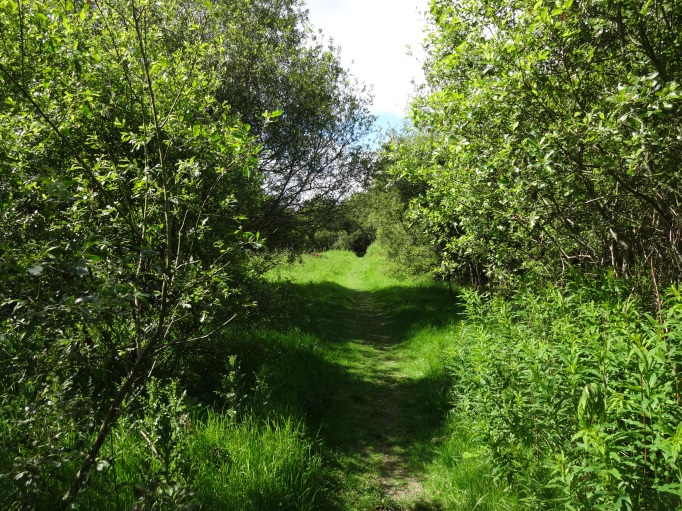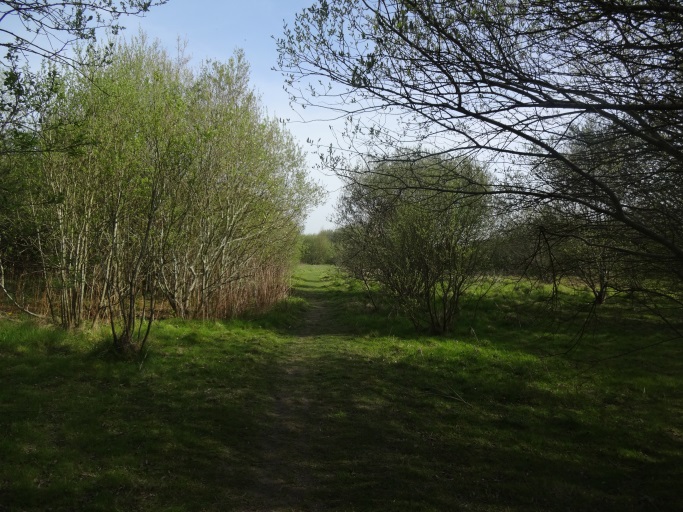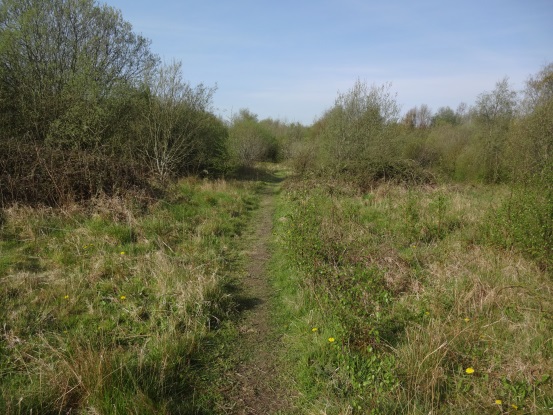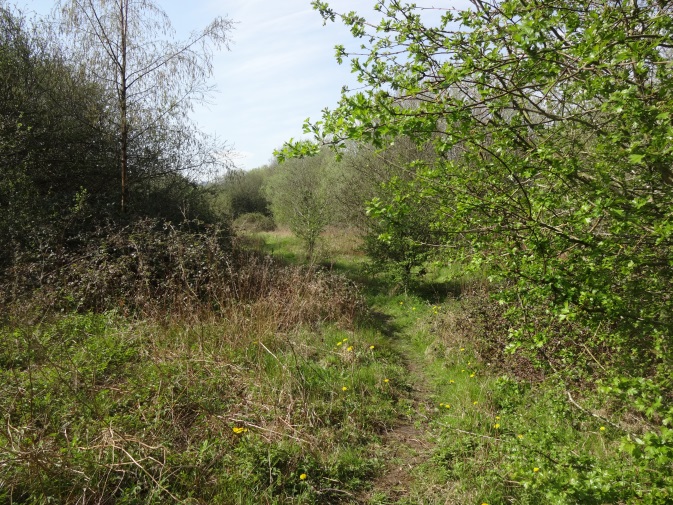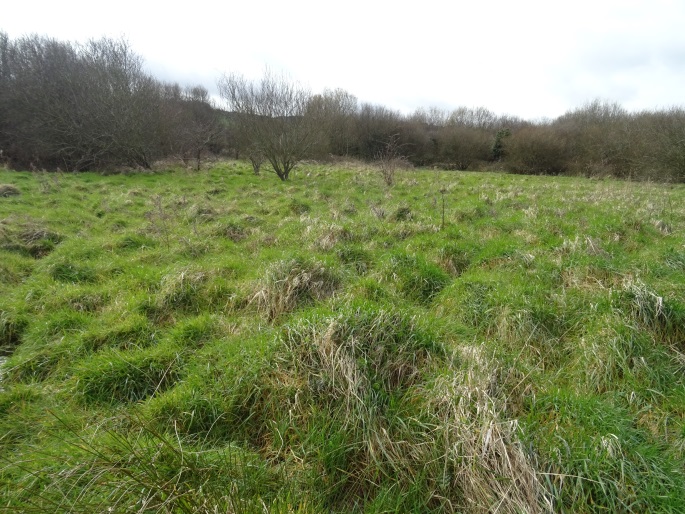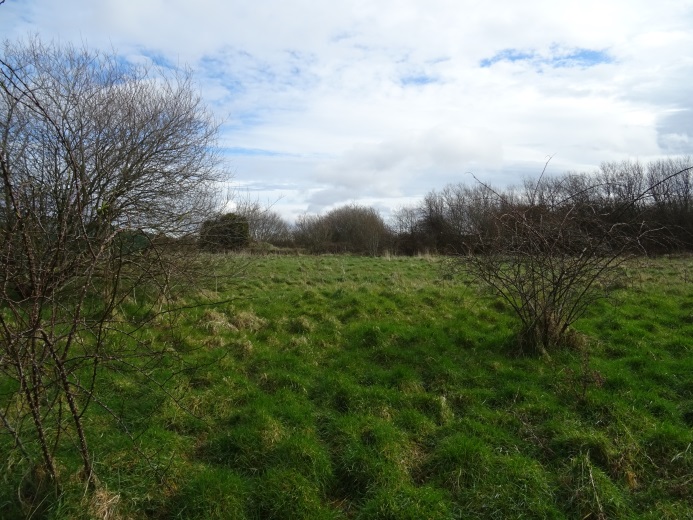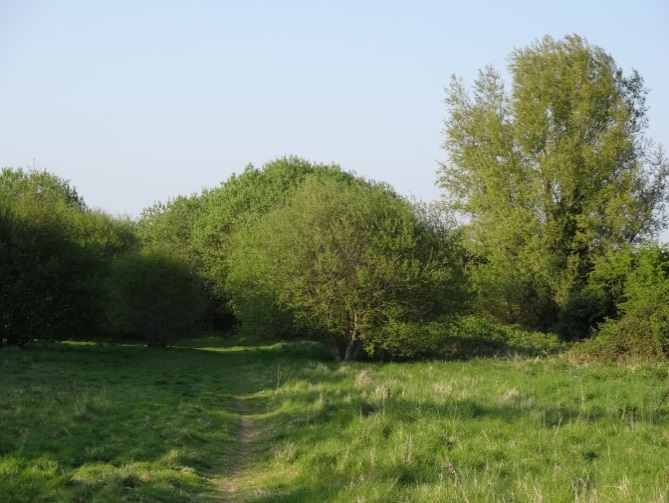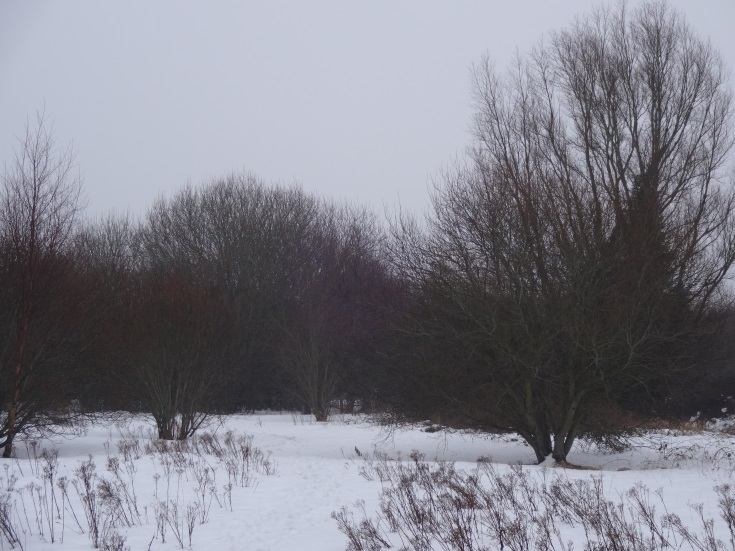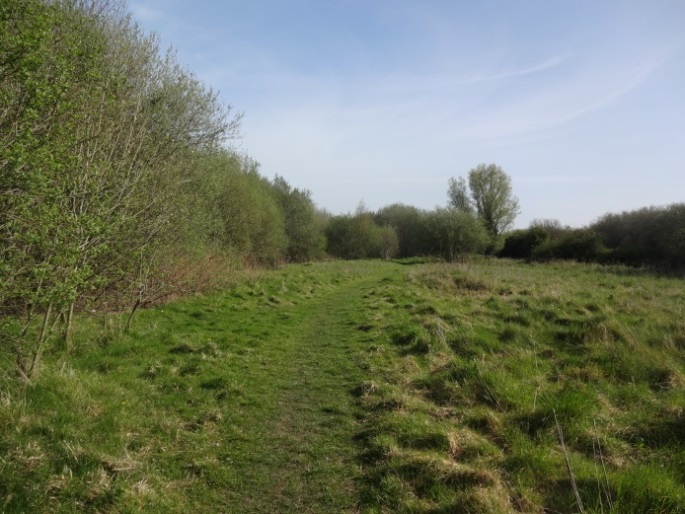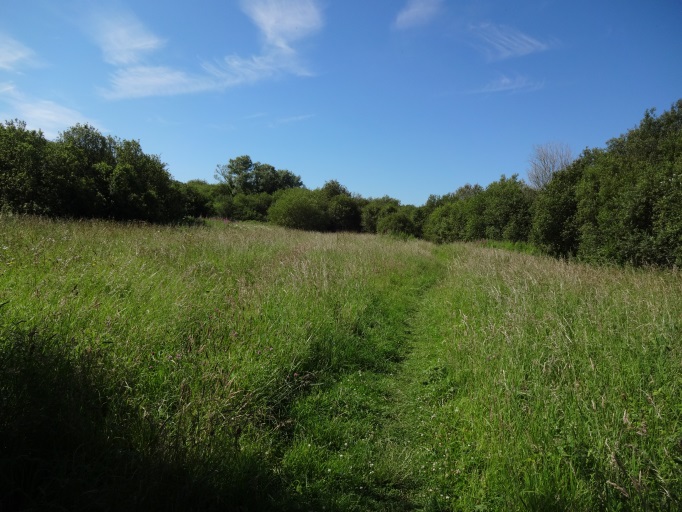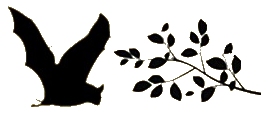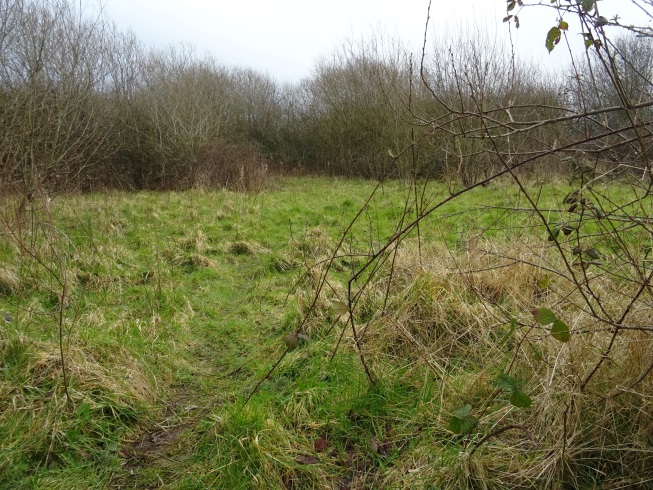There is 9,876.2 m² / 0.99 ha of Scrub across six areas of Rathcoole Woodlands1. These areas are classified as WS1 Scrub/transitional woodland after Fossitt, 2000. WS is Scrub/transitional woodland and category 1 is Scrub woodland2. Scrub is a precursor to woodland development. The scrub areas, because they are open, host a variety of flowers which change as spring moves into summer. They are an important habitat for insects particularly bees and butterflies and are frequented by foxes and rabbits. Further surveys are needed to determine the full complement of shrubs and flowers in these scrub areas and to determine the insects and animals using the areas.
The scrub areas in Rathcoole Woodlands are the last areas to be colonized by trees of what was agriculture land used to cultivate wheat. Visually scrub looks like uncultivated grassland or meadows with clusters of short trees and tall singular trees. The Scrub of Rathcoole Woodlands is mostly open, with some dense and impenetrable areas. The areas are damp and sometimes waterlogged. While, each Scrub Area is quite distinctive and variable, they collectively have Hawthorn (Crataegus monogyna), Blackthorn (Prunus spinosa), Bramble (Rubus fruticosus agg.), erect or scrambling roses (Rosa spp.), with willows (Salix spp.), small birches (Betula spp.) and small Hazel (Corylus avellana) which are scattered and do not yet form Woodland. The Scrub Areas of Rathcoole Woodlands comprise very little of the total area (Map 1) but are quite varied in character.
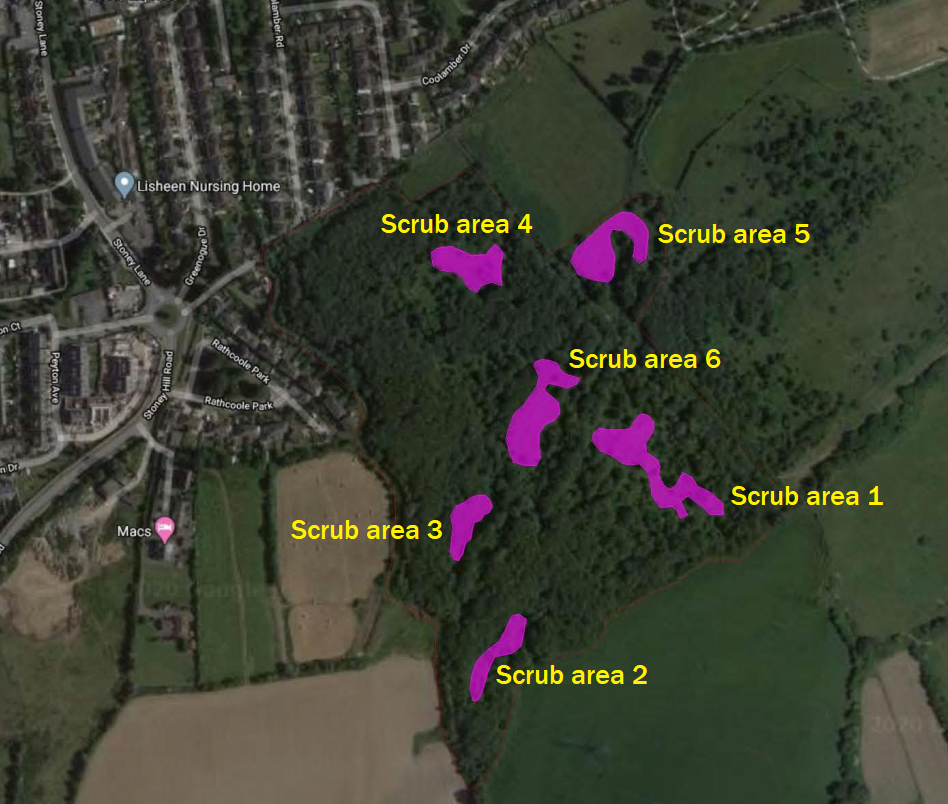
Scrub area 1 is the largest area. The Photographs below illustrate the variability in plants encountered both within the area, across the seasons and indeed years. This area is important for rabbits, foxes, butterflies, bees and insects.
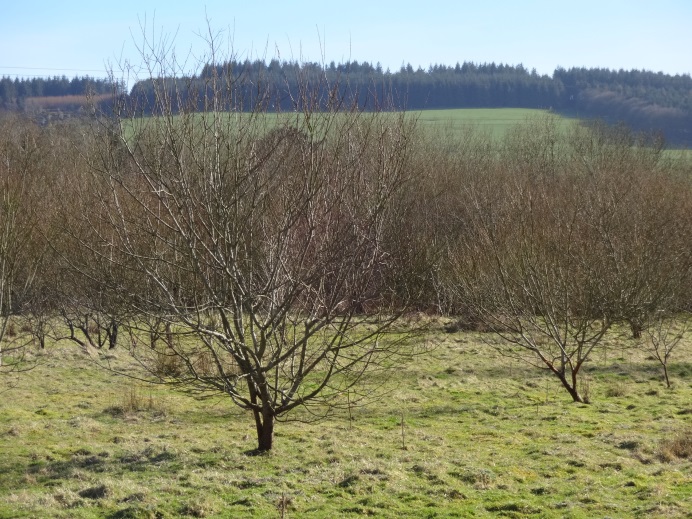

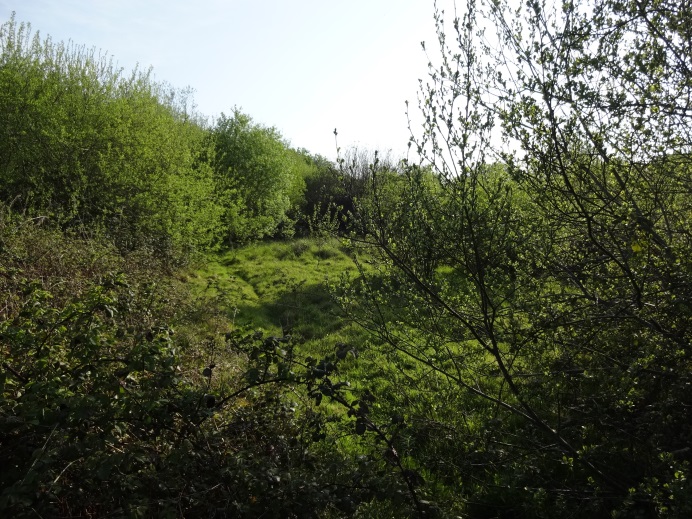

North End – November 2019
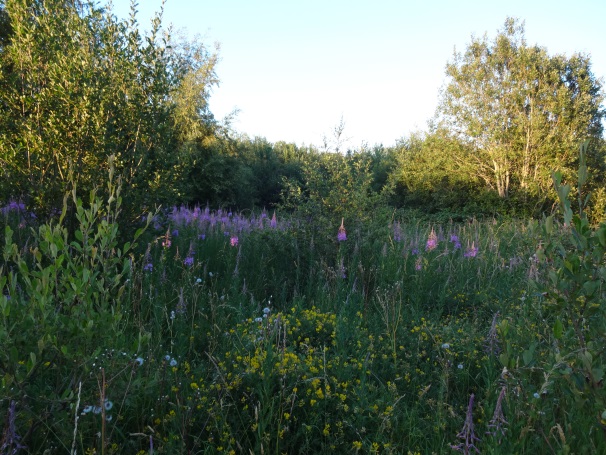
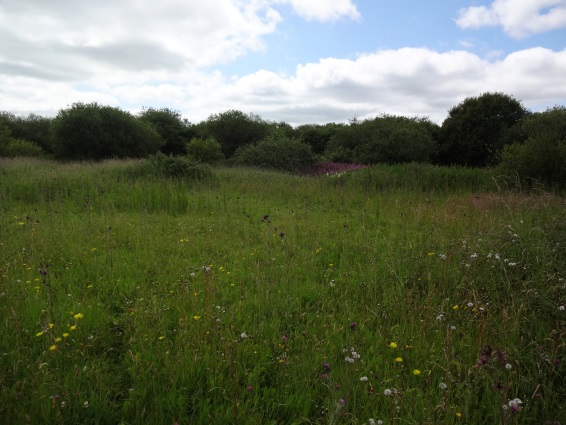
Scrub Area 2 is relatively small and has cowslips in summer and St. Johns Wort.
Scrub Area 3 and 6 are effectively one with a narrowing of trees creating a boundary. Birch and Willow whips were recorded at the edge of this area. Scrub area 4 is more densely vegetated with birch whips on the path and large patches of bramble.
